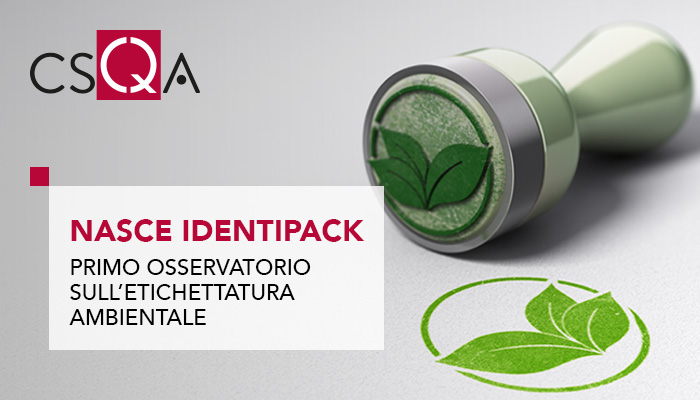
IdentiPack is born, the first national Observatory on the environmental labeling of packaging, the result of the collaboration between CONAI , the National Packaging Consortium which in Italy guarantees the achievement of the European recycling objectives, and GS1 Italy , one of the GS1 non-profit organizations active in 116 countries around the world which promote the use of the GS1 standards, the most used in the world for communication between companies.
IdentiPack will constantly monitor the presence of environmental information on the labels of packaging released for consumption in Italy and every six months will return a detailed analysis of the products on the market, photographing the situation relating to those available on the shelf and then actually purchased by the consumer, segmenting them according to the departments they belong to.
Using the GS1 GTIN standard of the GS1 barcode to identify products, the Observatory's analysis work crosses the environmental information reported on the labels of consumer packaging, digitized by the Immagino service of GS1 Italy ( 128,000 in this first edition), with the NielsenIQ calculations on sales in Italian hypermarkets and supermarkets (retail measurement service).
It will thus be possible to have updated data on how many products have the environmental information on the label that will be mandatory from next January - identification of the packaging composition material and indications for separate collection - and how many carry additional information , such as voluntary brands linked to the sustainability characteristics of the packaging, suggestions on how to carry out quality separate collection , or digital systems such as the QR code and the GS1 Digital Link to refer to web pages that report the environmental information on the packaging.
"A step forward in monitoring the response of Italian companies to the obligation of environmental labeling" comments CONAI president Luca Ruini . «It will allow us to understand how companies are moving and to find out if some sectors are struggling to adapt to the new obligation, as well as to study how the phenomenon of voluntary labeling takes shape and in which sectors. We will also be able to monitor what appears to be a real new frontier, the digital label: finding out how much and how it is used will be useful both for the packaging industry and for the recycling chain".
The first data
According to the first IdentiPack report, in 2021 on the Italian market the products that carry environmental information relating to the pack increased compared to the previous year, therefore ahead of the entry into force of the obligation established by European and Italian standards.
And the figures are encouraging, especially those relating to environmental information which, starting from 2023, will be mandatory in Italy.
The identification code of the used material is already present on 17,300 labels on the shelf, pursuant to decision 129/97/EC. They correspond to 13.5% of the total references on the grocery shelf (+3.2% pts compared to 2020) and to 25.1% of the total products sold (+1.8% pts compared to 2020).
Out of 46,156 references, the indications on the type of packaging and on the correct transfer to separate collection already appear. We are talking about 36.0% of all grocery products on the shelf monitored in 2021 (+2.2% pts compared to 2020) and 55.5% of those actually sold (+0.9% pts compared to 2020).
Not to mention that today the labels of 4,268 products have at least one indication that allows you to digitally view the environmental information on the content or on the product packaging. A basket that includes 3.3% of the references on the shelf and of those sold overall. It is a number that has grown by 0.3 percentage points when compared to that of 2020.
Among the product sectors analysed, the cold one is positioned on the first step of the podium for the communication of the environmental information of the packaging: ice creams and frozen foods take the leadership for the incidence of products that bear the identification code of the material on the label in addition to indications on the type of packaging and on the correct transfer to separate collection. But they also shine for the presence of certifications relating to the compostability of the packaging and suggestions for improving separate waste collection at home.
Food and grocery is also doing well, a sector in which four out of ten products indicate the material of which the packaging is made and the correct way to differentiate it.
Home care , on the other hand, takes the lead for the use of digital channels that provide additional information: a pioneering department in making QR codes and digital links available to the consumer, widespread on its packaging much more than in the rest of the grocery. (Source: https://www.conai.org/ )
For more information and to download the first IdentiPack report: Osservatorioidentipack.it